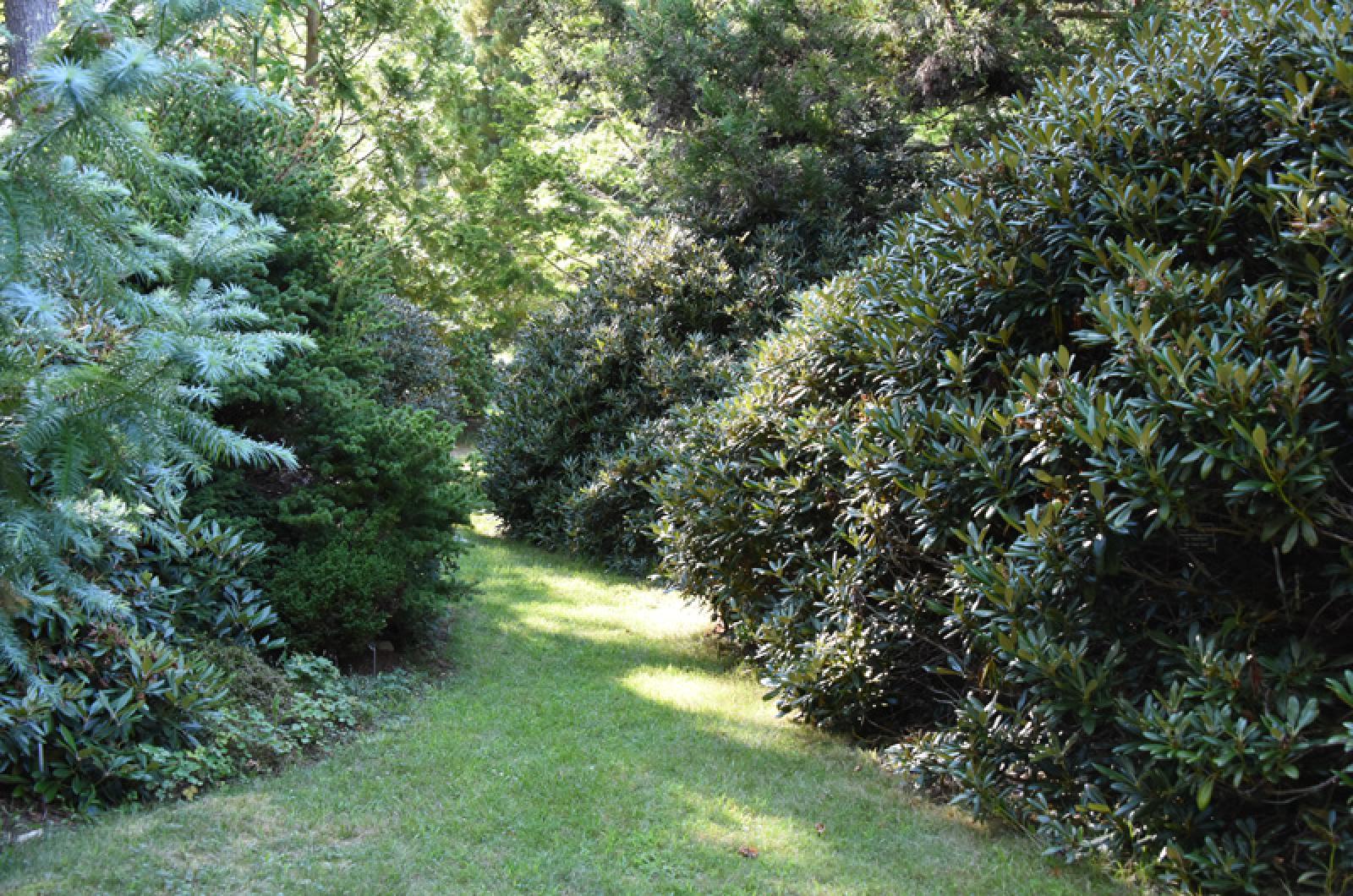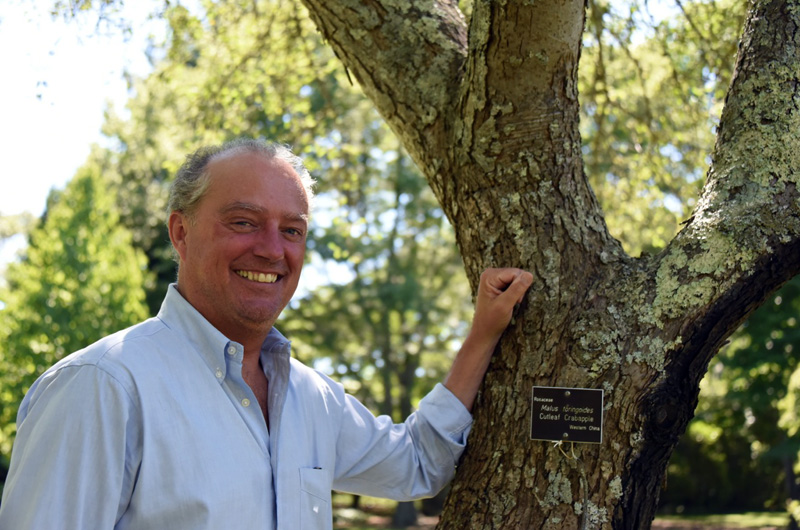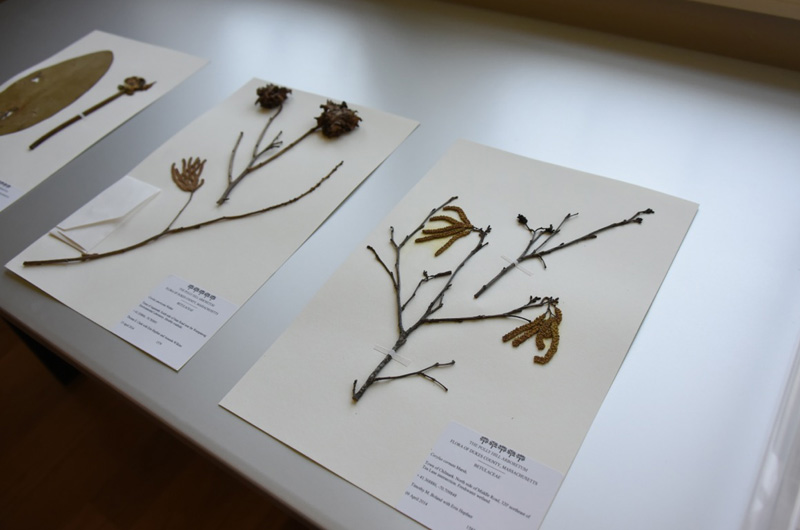A small herbarium at Polly Hill Arboretum has grown exponentially in the last 10 years, helping researchers understand Island ecology and monitor climate change, which has already left its mark on flowering plants in the region.
As of this week, the herbarium housed about 2,000 samples from on and off the Island, including at least 60 new records for Dukes County, and at least 40 species not seen here in several decades. The arboretum also recently joined the New England Vascular Plant Specimen Data project (NEVP), which aims to gather 1.3 million herbarium records and provide a foundation for the study of climate change and land use history in the region.
The growing body of data will help inform strategies for managing Island ecosystems, including coastal ponds and the globally rare sandplain grasslands that blanket parts of the south shore. It also adds increasing clarity to the ways in which climate change is already altering the Island.
In addition to the specimens collected since around 2003 when the herbarium project began, the arboretum has acquired a number of private collections going back to the 1960s, including those of Island naturalists Susan Whiting and Rusty Walton. And historical information available through NEVP, the Martha’s Vineyard Museum and elsewhere allow researchers to browse Island records going back to the 1800s.
“We’ve got most of the private collections donated to us,” Polly Hill executive director Tim Boland told the Gazette last week. He added that a new education center and botany lab constructed last year has greatly increased the capacity of the herbarium, and made it possible to accept new donations.
As of this week, Polly Hill counts 1,251 kinds of plants on the Island, including 833 native and 413 non-native taxa, but those numbers are growing along with the herbarium.
Climate change is already known to be altering New England plant communities, with coastal and estuarine ecosystems among the most at risk. The changes include earlier flowering in the spring, the movement of warmer southern species northward, and an increase in pests and diseases. At the same time, rising seas and ocean acidification threaten the delicate coastal pond ecosystems already suffering from an overabundance of nitrogen from septic tanks and other sources. Polly Hill was an amateur botanist who began work on the West Tisbury farm that is now the arboretum in 1958, and remained active there until 2003. She observed shifting weather patterns and an increase in pests and diseases that Mr. Boland said made it harder for her to manage certain plants over time.
“We can cultivate plants now that we could never dream of cultivating even 30 years ago,” he added, pointing to climate change as the cause. “That’s quite amazing.” He noted that the Island’s maritime climate helps moderate seasonal shifts and create longer springs and falls, but average annual temperatures have also changed.
The U.S. Department of Agriculture in 2012 updated its 1990 hardiness zone map, shifting every zone north to reflect warmer temperatures across the country. Martha’s Vineyard went from zone 6 to zone 7a. “It means you can grow plants from warmer parts of the world,” Mr. Boland said.
With warmer weather comes earlier flowering times in the spring as plants try to adapt. A 2013 study of flowering times in Massachusetts and Wisconsin (based on historic data collected by Henry David Thoreau and Aldo Leopold) noted that flowering times have generally kept pace with rising temperatures, even during record breaking spring temperatures in 2010 and 2012.
“It is quite amazing to me personally that people don’t believe this is happening,” Mr. Boland said of the earlier flowering times. “I see it, and I see it in other parts of the world where we go to collect plants.”
Herbarium specimens such as the ones at Polly Hill typically indicate flowering time, since flowers are the key identifying feature for most plants. As one aspect of its data initiative, Polly Hill hopes to eventually incorporate older specimens into its online database and identify long-term trends in flowering times on the Island.
At the arboretum grounds in West Tisbury, which include about 30 acres of cultivated plants, several other changes have become apparent as a result of climate change.
“We are seeing an explosion of growth of, particularly, woody vines,” Mr. Boland said, listing a few examples, including poison ivy, cat briar and bittersweet. “And those are mostly vines that really take off due to the increased availability of carbon in the air.” He noted similar observations throughout the Northeast and in the southern states.
Warmer weather has allowed pests such as fall canker worm, winter moth and cyinipid wasps to overwinter and wreak havoc on oaks and other species on the Vineyard. It also fuels fungal pathogens that would otherwise tend to die off in the cold. And increased drought conditions such as those seen here in the last few years makes plants even more vulnerable to disease.
Arboretum records reveal an influx of invasive species in recent years. Those include a number of escaped garden varieties that would normally be considered annual plants but that have been able to resprout the following year. The arboretum maps the spread of invasive species on the Island, partly as evidence when asking the state to add certain species to a list of prohibited plants.
According to the arboretum, the overall percentage of non-native species on the Island has increased five per cent since the last official flora, published in 1999.
But Mr. Boland said the Island has so far been spared an influx of species from areas farther south. He said migrating species would only be considered invasive if they alter the natural functioning of an ecosystem.
Much of the arboretum’s work focuses on coastal ponds, which it considers among the most vulnerable ecosystems in light of both climate change and nutrient pollution. The herbarium itself began with a donation of algae samples collected by amateur botanist Rose Treat in 2002, later adding lichens and flowering plants to the mix.
In addition to the dangers associated with ocean acidification, the increased coastal flooding that comes with climate change may take out species that are less flood tolerant. Among other things, the arboretum monitors both fresh and brackish ponds on the Island for invasive species.
On land, much of the attention focuses on the assortment of rare orchids that depend on specific pollinators to survive. “They are quite rich and diverse on the Island,” Mr. Boland said of the flowering plants. But most of them are also endangered. Drought and other stresses could affect the pollinators, which would in turn affect the orchids. And for many plants, earlier springs could mean the pollinators arrive too late.
Data in the herbarium could be used to protect vulnerable species by indicating which ones need help. Mr. Boland ticked off a list of possible strategies for responding to climate change in the future, including growing plants from seed and trying to reestablish them in their original habitat, working to move plants farther north (a process called assisted migration), and even creating an Island seed bank.
An online database developed by the arboretum has made sampling much more precise in terms of recording a plant’s location — and easer for collectors. The database now contains about 1,500 dots on a map, each one representing a single collection site. And a part of the regional NVEP project, Polly Hill also plans to digitize its entire herbarium collection over the next two years.
But traditional fieldwork is still the backbone of the project, and for now the goal is mainly to collect and preserve as many specimens as possible.
On a recent afternoon, Greg Palermo, a research associate for Polly Hill who along with Margaret Curtin has collected about 1,000 specimens for the herbarium since 2013, arrived in the new education center with an armload of wooden presses containing the latest batch of samples.
He opened one of the presses and lifted off a layer of newspaper, revealing flattened, serrated leaves in the shape of spearheads. The two botanists agreed this sample of Verbena urticifolia from Tea Lane in Chilmark was a new record for the county. It was one of about a dozen new species collected so far this year.
“There are not a lot of people looking for plants,” Mr. Palermo said, explaining the frequency of new records on the Island. “There have been a lot of exotics that have come, and there are a lot of native plants that people never noticed before.” He opened another press, revealing another new record: Jasione montana, a small, delicate plant with a purple flower, collected along a bike path between Edgartown and Oak Bluffs.
“Greg and others are really picking up a lot of the slack,” said Mr. Boland, noting a series of gaps in the historic record since 1980. Along with Mr. Palermo and Ms. Curtin, the Sheriff’s Meadow Foundation, The Nature Conservancy, The Trustees of Reservations and the Martha’s Vineyard Land Bank also participate in the arboretum’s effort to identify historic plants (those that have not been collected in 60 years or more).
“There is so much strength in collaboration,” Mr. Boland said. “It just makes these projects more rich, and then the data collection more widespread and important.”











Comments (2)
Comments
Comment policy »